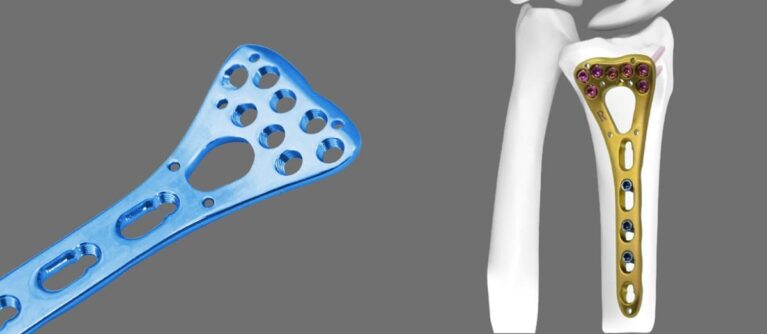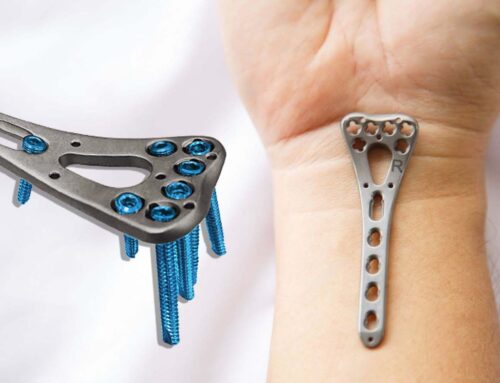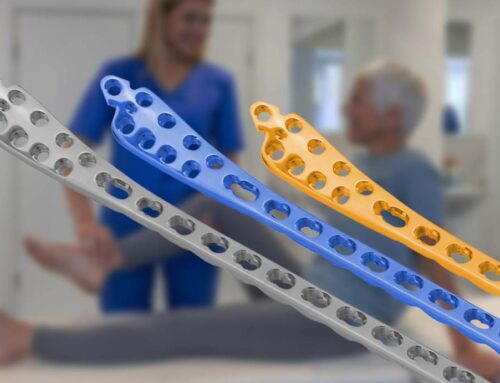A Locking Compression Plate (LCP) Radius Fixed Angle Plate is a specialized orthopedic implant designed to stabilize fractures of the radius bone in the forearm, particularly in the distal region near the wrist.
Here’s a detailed overview of its key features and applications:
Design and Structure:
- Material: Typically made from titanium or stainless steel, ensuring biocompatibility and high strength.
- Shape: Anatomically contoured to fit the natural curvature of the radius bone, reducing the need for intraoperative plate bending.
- Screw Holes: Includes both locking and non-locking screw holes. The locking holes allow the screws to thread into the plate, providing a fixed-angle construct.
- Fixed-Angle Feature: The locking mechanism ensures that the screws are locked into the locking plate at a fixed angle, offering greater stability, particularly in osteoporotic bone or complex fractures.
- Low Profile: Designed to minimize irritation to surrounding soft tissues and reduce the risk of tendon damage.
Applications:
- Fractures: Ideal for treating distal radius fractures, including intra-articular and extra-articular fractures, comminuted fractures, and osteoporotic fractures.
- Osteotomies: Used in corrective osteotomies of the radius where precise angular correction is required.
- Nonunions and Malunions: Suitable for revision surgeries in cases of nonunion or malunion of previous fractures.
Advantages:
- Stability: The fixed-angle construct provides angular stability, which is especially beneficial in poor quality bone.
- Early Mobilization: Enhanced stability allows for early postoperative mobilization, promoting quicker functional recovery.
- Reduced Soft Tissue Complications: The low-profile design and anatomical contouring help reduce the risk of soft tissue irritation and damage.
Surgical Considerations:
- Preoperative Planning: Detailed imaging studies (X-ray, CT scans) are essential for planning the placement and ensuring an optimal fit.
- Surgical Technique: Precise technique is required to ensure proper alignment and fixation. Surgeons must be adept at handling both the locking and non-locking screws.
- Postoperative Care: Regular follow-up and imaging to monitor bone healing and detect any potential complications early.
Complications:
- Infection: As with any surgical procedure, there is a risk of infection which can be minimized with sterile techniques and postoperative care.
- Hardware Irritation: Despite its low profile, some patients may experience discomfort or irritation from the plate.
- Nonunion or Malunion: Although the plate is designed to promote stable healing, some fractures may still fail to heal properly.
Overall, the LCP Radius Fixed Angle Plate is a versatile and reliable option for managing complex fractures of the distal radius, offering the benefits of angular stability and minimal soft tissue interference.





Leave A Comment